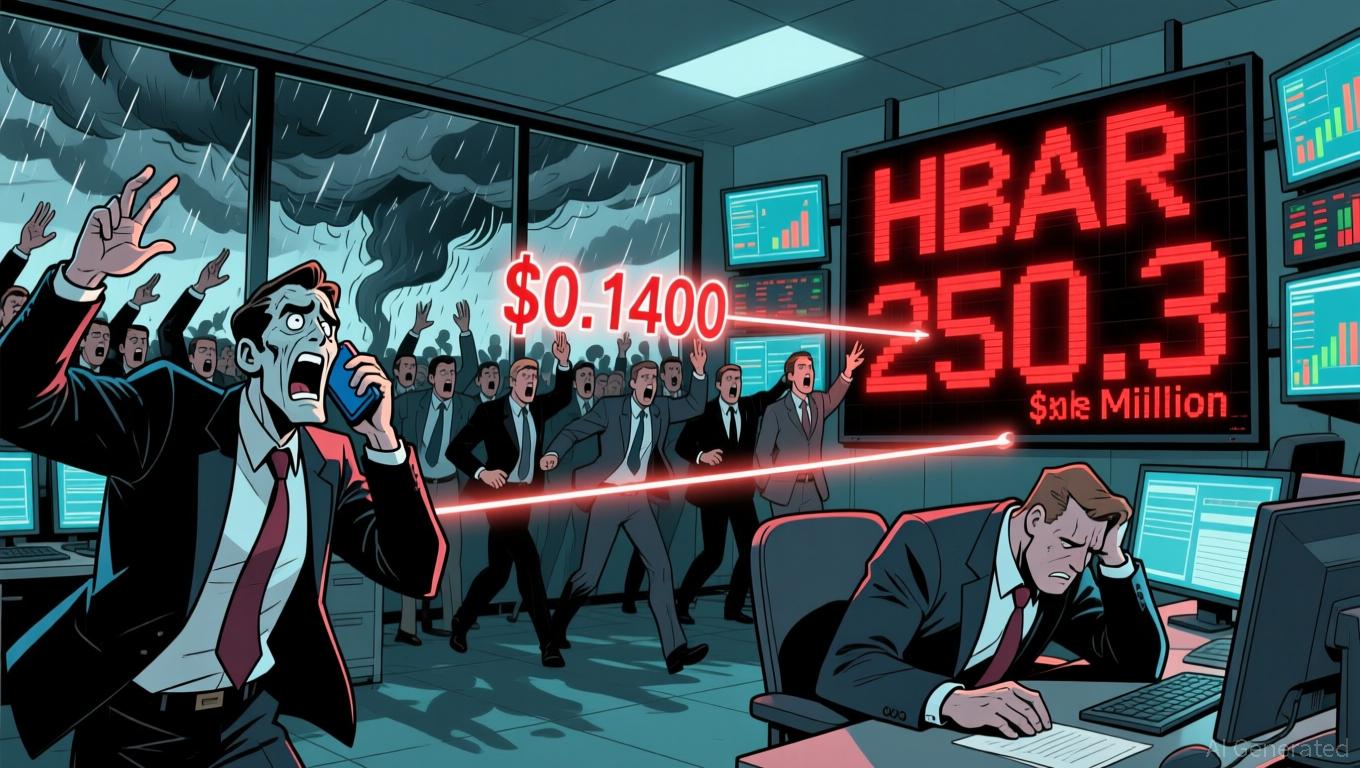Federal Reserve Decisions and Their Impact on Solana (SOL)
- Fed's 2025 rate cuts and QE pivot drive institutional capital into Solana's blockchain ecosystem, boosting staking ETFs to $550M in assets. - Regulatory alignment via GENIUS Act and Solana's U.S.-backed stablecoin enhance institutional trust in crypto compliance frameworks. - Fed policy uncertainty triggers short-term volatility (14% Solana price drop), yet 21Shares' $100M ETF inflow signals enduring institutional confidence. - Projected 2026 QE transition could amplify liquidity for Solana's DeFi infras
Fed Policy: Shifting from Tightening to Easing
The minutes from the Fed’s October 2025 meeting showed a split among policymakers about further rate reductions, but the board ultimately
Institutional Demand for Solana: Multiple Drivers
Interest from large investors in Solana has climbed sharply in response to these policy changes. The introduction of the
Additionally, regulatory measures such as the GENIUS Act—which enforces stricter reserve rules for stablecoins—have increased confidence in digital assets. Solana’s $YLDS stablecoin, which is backed by U.S. Treasuries and Treasury repo agreements, fits these new standards,
Volatility and Uncertainty: A Double-Edged Sword
Despite these favorable trends, internal disagreements at the Fed have led to increased volatility. At the October 2025 meeting, two members voted against the rate cut, and the November move to end QT without further cuts triggered
Looking Forward: Policy, Liquidity, and Institutional Strategy
As we look to the future, the Fed’s decisions in December 2025 will be especially significant. Should the expected 25-basis-point cut occur,
Conclusion
The Federal Reserve’s policy adjustments in 2025—from rate reductions to pausing QT—have created fertile ground for institutional participation in advanced blockchains like Solana. While market swings remain a risk, the combination of regulatory compliance, increased liquidity, and innovative investment vehicles such as staking ETFs puts Solana in a strong position to benefit from these macroeconomic trends. For investors, the main lesson is clear: closely tracking the Fed’s moves is crucial for navigating the next stage of crypto’s institutional evolution.
Disclaimer: The content of this article solely reflects the author's opinion and does not represent the platform in any capacity. This article is not intended to serve as a reference for making investment decisions.
You may also like
Hyperliquid News Today: Reduced Fees or Doubts? Hyperliquid’s Bold Strategy for Expansion
- Hyperliquid, a top-20 DeFi exchange, faces a 25% HYPE token price drop to $25 amid market volatility and declining investor confidence. - Its HIP-3 Growth Mode initiative slashes trading fees by 90% to attract new markets but has yet to reverse downward trends or boost liquidity. - Analysts warn fee cuts may not address long-term user retention challenges in a crowded DeFi landscape dominated by centralized rivals like Binance. - Market skepticism persists as traders await volume explosions and tighter s
Bitcoin News Today: Bitcoin ETFs See $2.96B Withdrawals as Investors Seek Greater Macro Certainty
HBAR Drops 11.5%: Institutional Withdrawals and Liquidity Challenges Highlight Market Vulnerability
- HBAR token plummeted 11.5% on Nov 21 as institutional selling overwhelmed markets, breaking key support at $0.1350 and triggering stop-loss cascades. - Preceded by prior declines including 6% drop on Nov 18 and 180%+ volume spikes, forming descending channel patterns signaling deteriorating market structure. - Liquidity crises emerged with 250M-token sell wave (98% above average) and trading halts, exposing fragile infrastructure amid crypto market cap falling below $2.9T. - Institutional distribution do

Bitcoin News Update: Bitcoin Miners Expand into AI and Leverage Tax Regulations to Withstand Market Volatility
- Bitcoin miners leverage tax depreciation and AI/HPC diversification to offset market volatility and regulatory risks. - Canaan and Hive report revenue surges (104% and 285% YoY) through mining equipment sales and expanded operations. - Industry faces challenges including $43M cash burn at American Bitcoin and U.S. probes into Chinese ASIC suppliers like Bitmain. - Strategic shifts to AI hosting (e.g., Hive's $140M pipeline) and Texas facility expansions aim to reduce Bitcoin price dependency. - Tax refor
